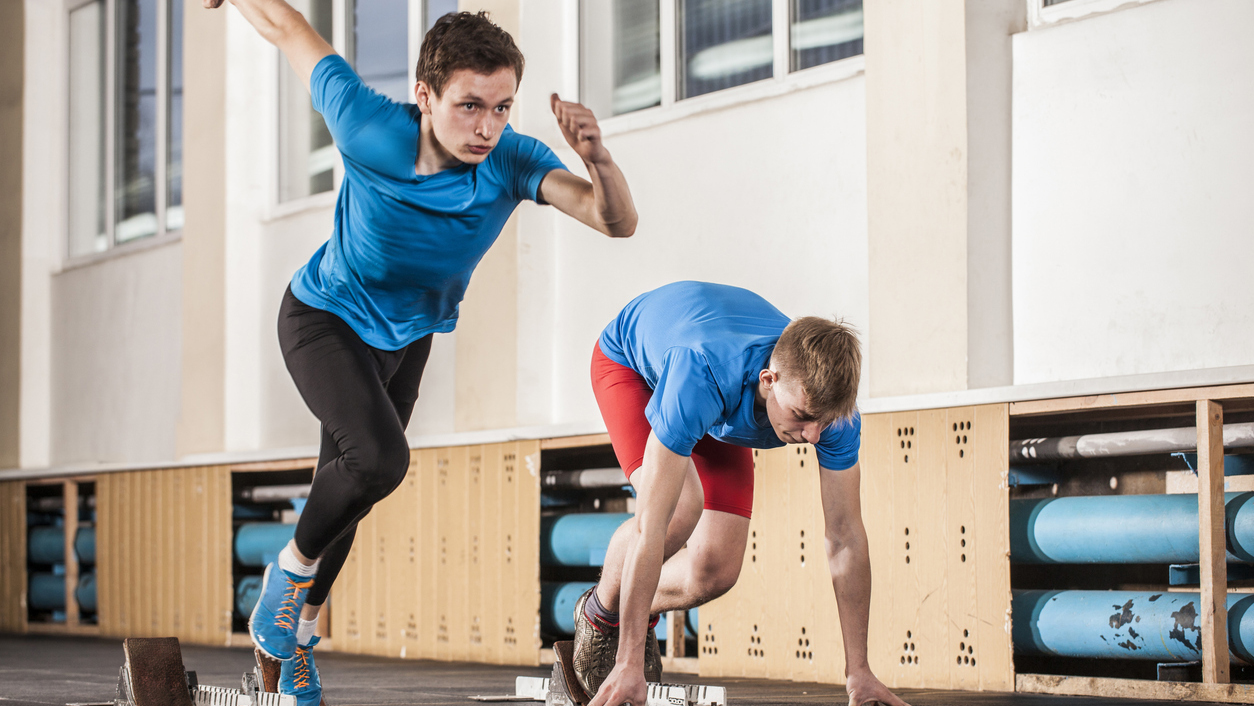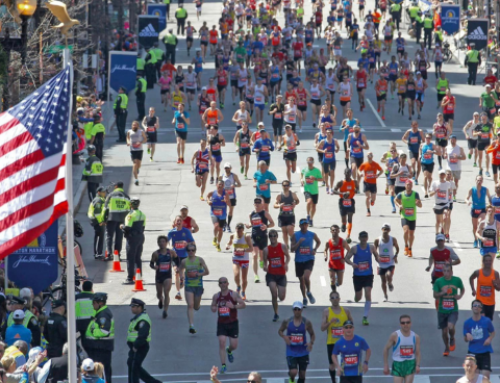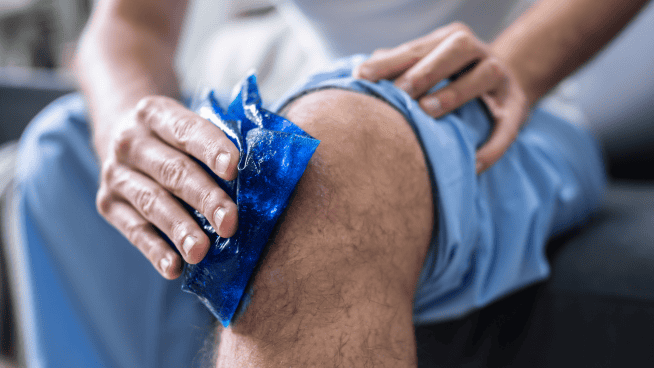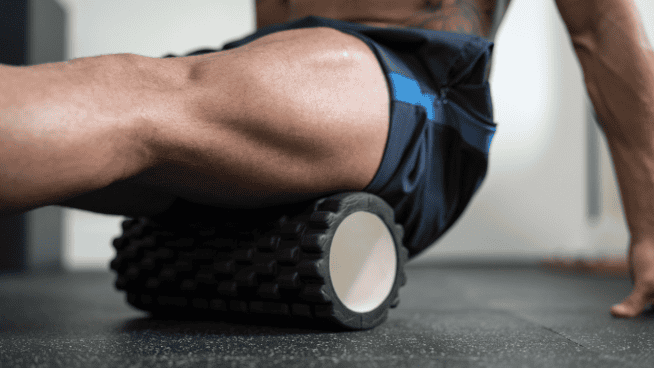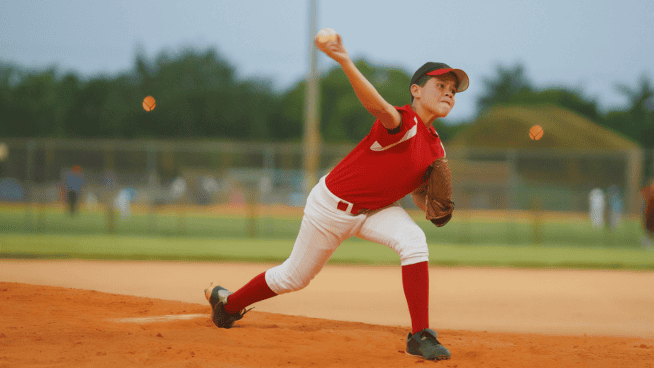How Every Athlete Can Become More Powerful For Their Sport
Every athlete from every sport will benefit from becoming more powerful, more explosive. From football to golf, lacrosse to swimming, and gymnastics to ultimate frisbee, there are moments in the sport where maximal power is expressed. This maximal power can be the difference between winning and losing. But what is power? How is it trained? And how can you develop it safely and efficiently?
Power: Defined
Simply put, power is producing force quickly. Think of it like this, your car runs out of gas, and you have to push it up a hill. You work really, really hard and get the car up the hill, but it takes forever. If you were to tie 10 horses to the front of that car, and then they galloped as hard as possible, the car would fly up the hill quickly. The same amount of work is being done, the car going up the hill, but it is done much faster. Safe to say, the 10 horses are more powerful.
In athletics or the weight room, we want to produce force quickly, express our strength quickly, and move heavy loads very quickly. We need to jump high, kick fast and hard, and push our opponents around. A few common methods coaches, trainers, and athletes use to try to develop power, some better than others. First things first, we need to set a strong foundation for power.
Training for Power: The Foundation
To express our strength fast and produce force quickly, we need to take the time to develop foundational strength. This is the heavier, slower strength training like single-leg squats, trap bar deadlifts, leg presses, bench presses, rows, and chin-ups that you find people doing in most weight rooms. Building muscle and foundational strength lay the foundation for power production. You need first to have the strength and muscle to produce the force. Then you can work on producing that force quickly. Spend some time developing strength in your off-season. Not only will it set the stage for explosive power, but it will help to build resiliency to injury.
Training for Power: Rapid Force Production
When athletes or strength coaches think of power training, they immediately gravitate towards the Olympic lifts. The Olympic lifts are the snatch, hang clean, clean and jerk, power clean, and all the other variations you can think of with a loaded barbell. While these exercises can be great choices for developing power in athletes, they are extremely complex exercises to do correctly. Olympic weightlifting is a sport in and of itself, and the athletes in that sport spend years developing the skill of these lifts. Football players, golfers, swimmers, lacrosse players, soccer players, and any other athlete spend enough time developing specific skills for their sport. Spending an excessive amount of time in the weight room developing a skill just for training is not a very good use of an athlete’s time.
Instead of spending weeks and months learning techniques before you even train for power, focus on lower skill movements. The less you have to think, the more powerful and explosive you can be. When you are sprinting maximally, are you actually thinking about the movement of every step and every muscle? No, you go. You sprint, you jump, and you throw.
The Best Ways For Every Athlete To Develop Power
Sprints
Short-burst sprints are one of the best ways athletes can get more powerful. Most sports involve running or sprint, so this is a pretty specific way to get more powerful. Adding resistance to short-burst sprints is an excellent way to add some load to this movement and train against a resistance greater than just your own bodyweight. Some options include hill sprints, sled sprints, parachute sprints, or band resisted sprints. Applying the principles of power training to these sprint variations, here is a sample of the power portion of a workout using sprints.
6 hill sprints that take about 8-12 seconds to complete when sprinting at max speed. Rest about 2-3 minutes between efforts so that each sprint can be as powerful as the last. Be sure to warm up and cool down properly around this workout.
Jumps
Being able to control and move your own body weight is a crucial part of every sport. Jumps can be made very sport-specific if you try to match the type of jump, the direction of the jump, and the loading of the jump. Some sample exercises include box jumps, lateral box jumps, single-leg box jumps, broad jumps, split jump lunges, and lateral bounding drills. These exercises can be loaded similar to the sprints with band resistance pulling in the opposite direction of the jump or weights by using a weighted vest or dumbbell. Keep in mind. This is power training. Too much weight will slow you down to the point where jump mechanics will be totally off. Just a little load goes a long way. Here is a sample of the power portion of a workout using weighted box jumps.
4 sets of 4 box jump holding on to light dumbbells. Set the box at a height that the athlete can land in a soft, quarter squat position. If the box is too high, the athlete will have to compromise landing mechanics significantly. Step down from the box each rep and do a full reset. Rest 2-3 minutes between full sets to allow enough recovery, so every jump set is as powerful as the last.
Throws
Medicine ball throws are my favorite power exercise to incorporate the full body. You need to coordinate movement from the lower body, through the core, to the upper body. Medicine balls are also great for training rotational power. Something often overlooked in training. Think of swinging a bat, winding up to throw a kick or powerfully changing direction. These movements all have a rotational component where you use the legs and hips to transfer power to the upper body through the core. A baseball wouldn’t go very far if you only swung the bat with your arms.
Med ball slams, chest pass, throws to a wall, rotational ball med ball throws to a wall, overhead ball throws, and chop throws are great examples of power exercises using medicine balls for full-body power. Here is a sample of the power portion of a workout using medicine balls.
4 sets of 4 reps/side of a rotational power throw to a wall. Use a light medicine ball that allows you to develop maximum rotational power. Reset between each rep. Rest about 15 seconds between sides and about 2 minutes between full sets so that each set can be as powerful as the last.
Power is producing force fast. Expressing your strength quickly. In order to get more powerful, first build a strong foundation in the weight room with compound movements like squats, deadlifts, lunges, presses, and rows. Once you have built this strong foundation, train to produce force quickly by sprinting, jumping, and throwing. Remember, the less you have to think about the exercise, the harder and faster you can push.
Read More
RECOMMENDED FOR YOU
How Every Athlete Can Become More Powerful For Their Sport
Every athlete from every sport will benefit from becoming more powerful, more explosive. From football to golf, lacrosse to swimming, and gymnastics to ultimate frisbee, there are moments in the sport where maximal power is expressed. This maximal power can be the difference between winning and losing. But what is power? How is it trained? And how can you develop it safely and efficiently?
Power: Defined
Simply put, power is producing force quickly. Think of it like this, your car runs out of gas, and you have to push it up a hill. You work really, really hard and get the car up the hill, but it takes forever. If you were to tie 10 horses to the front of that car, and then they galloped as hard as possible, the car would fly up the hill quickly. The same amount of work is being done, the car going up the hill, but it is done much faster. Safe to say, the 10 horses are more powerful.
In athletics or the weight room, we want to produce force quickly, express our strength quickly, and move heavy loads very quickly. We need to jump high, kick fast and hard, and push our opponents around. A few common methods coaches, trainers, and athletes use to try to develop power, some better than others. First things first, we need to set a strong foundation for power.
Training for Power: The Foundation
To express our strength fast and produce force quickly, we need to take the time to develop foundational strength. This is the heavier, slower strength training like single-leg squats, trap bar deadlifts, leg presses, bench presses, rows, and chin-ups that you find people doing in most weight rooms. Building muscle and foundational strength lay the foundation for power production. You need first to have the strength and muscle to produce the force. Then you can work on producing that force quickly. Spend some time developing strength in your off-season. Not only will it set the stage for explosive power, but it will help to build resiliency to injury.
Training for Power: Rapid Force Production
When athletes or strength coaches think of power training, they immediately gravitate towards the Olympic lifts. The Olympic lifts are the snatch, hang clean, clean and jerk, power clean, and all the other variations you can think of with a loaded barbell. While these exercises can be great choices for developing power in athletes, they are extremely complex exercises to do correctly. Olympic weightlifting is a sport in and of itself, and the athletes in that sport spend years developing the skill of these lifts. Football players, golfers, swimmers, lacrosse players, soccer players, and any other athlete spend enough time developing specific skills for their sport. Spending an excessive amount of time in the weight room developing a skill just for training is not a very good use of an athlete’s time.
Instead of spending weeks and months learning techniques before you even train for power, focus on lower skill movements. The less you have to think, the more powerful and explosive you can be. When you are sprinting maximally, are you actually thinking about the movement of every step and every muscle? No, you go. You sprint, you jump, and you throw.
The Best Ways For Every Athlete To Develop Power
Sprints
Short-burst sprints are one of the best ways athletes can get more powerful. Most sports involve running or sprint, so this is a pretty specific way to get more powerful. Adding resistance to short-burst sprints is an excellent way to add some load to this movement and train against a resistance greater than just your own bodyweight. Some options include hill sprints, sled sprints, parachute sprints, or band resisted sprints. Applying the principles of power training to these sprint variations, here is a sample of the power portion of a workout using sprints.
6 hill sprints that take about 8-12 seconds to complete when sprinting at max speed. Rest about 2-3 minutes between efforts so that each sprint can be as powerful as the last. Be sure to warm up and cool down properly around this workout.
Jumps
Being able to control and move your own body weight is a crucial part of every sport. Jumps can be made very sport-specific if you try to match the type of jump, the direction of the jump, and the loading of the jump. Some sample exercises include box jumps, lateral box jumps, single-leg box jumps, broad jumps, split jump lunges, and lateral bounding drills. These exercises can be loaded similar to the sprints with band resistance pulling in the opposite direction of the jump or weights by using a weighted vest or dumbbell. Keep in mind. This is power training. Too much weight will slow you down to the point where jump mechanics will be totally off. Just a little load goes a long way. Here is a sample of the power portion of a workout using weighted box jumps.
4 sets of 4 box jump holding on to light dumbbells. Set the box at a height that the athlete can land in a soft, quarter squat position. If the box is too high, the athlete will have to compromise landing mechanics significantly. Step down from the box each rep and do a full reset. Rest 2-3 minutes between full sets to allow enough recovery, so every jump set is as powerful as the last.
Throws
Medicine ball throws are my favorite power exercise to incorporate the full body. You need to coordinate movement from the lower body, through the core, to the upper body. Medicine balls are also great for training rotational power. Something often overlooked in training. Think of swinging a bat, winding up to throw a kick or powerfully changing direction. These movements all have a rotational component where you use the legs and hips to transfer power to the upper body through the core. A baseball wouldn’t go very far if you only swung the bat with your arms.
Med ball slams, chest pass, throws to a wall, rotational ball med ball throws to a wall, overhead ball throws, and chop throws are great examples of power exercises using medicine balls for full-body power. Here is a sample of the power portion of a workout using medicine balls.
4 sets of 4 reps/side of a rotational power throw to a wall. Use a light medicine ball that allows you to develop maximum rotational power. Reset between each rep. Rest about 15 seconds between sides and about 2 minutes between full sets so that each set can be as powerful as the last.
Power is producing force fast. Expressing your strength quickly. In order to get more powerful, first build a strong foundation in the weight room with compound movements like squats, deadlifts, lunges, presses, and rows. Once you have built this strong foundation, train to produce force quickly by sprinting, jumping, and throwing. Remember, the less you have to think about the exercise, the harder and faster you can push.
Read More

